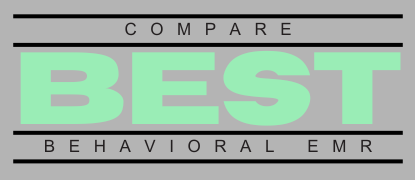
If you’re a practice owner or clinician in behavioral health, chances are you’ve already realized that telehealth isn’t just a temporary solution—it’s the future. But if you’re still using that clunky old EMR software designed when dial-up internet was cool (was it ever, really?), it’s time to reconsider your options. Selecting the right behavioral health EMR is crucial to delivering effective telehealth services, streamlining your practice operations, and maintaining your sanity.
Trust me, I’ve been there: frustrated by software that’s less intuitive than assembling IKEA furniture without instructions. But after years of trial and error, I’ve learned what features truly matter when choosing the ideal EMR for telehealth behavioral health services. Let me save you from headaches by sharing the key considerations you should keep in mind.
Why Choosing the Right Behavioral Health EMR Matters More Than Ever
Telehealth has transformed how behavioral health practices operate. According to the American Psychological Association, telehealth services have expanded dramatically, and they aren’t going away anytime soon. With this shift, your EMR software isn’t merely a documentation tool—it’s the backbone of your virtual practice.
Here’s why your choice matters:
- Efficiency and Productivity: A seamless EMR saves time for clinicians, allowing more focus on patient care instead of cumbersome data entry.
- Patient Experience: A smooth telehealth experience boosts patient satisfaction and retention. Glitchy software? Patients notice, trust me.
- Compliance and Security: HIPAA compliance isn’t negotiable. The right EMR ensures secure, compliant telehealth sessions and documentation.
Essential Features to Look for in a Behavioral Health EMR for Telehealth
1. Built-in Telehealth Video Conferencing
Imagine this scenario: You’re set to start a session with a new client, but they can’t figure out how to log into a separate video conferencing app. Sound familiar? Integrated video conferencing within your EMR simplifies the experience for both clinicians and patients. Platforms like SimplePractice or TherapyNotes offer built-in, HIPAA-compliant video conferencing tools, making virtual sessions as easy as clicking a button.
2. User-Friendly Documentation Tools
Raise your hand if you’ve ever spent your evening hours painstakingly completing notes because your EMR software feels like it’s actively working against you. (Been there, done that.) Choose software with intuitive, customizable templates specifically designed for behavioral health practices. Platforms like Kareo or TheraNest offer robust documentation tools tailored for mental health, enabling faster note-taking and fewer headaches.
3. Client Portal and Appointment Reminders
Ever had a client forget their telehealth session because “it wasn’t on the calendar?” A client portal with automated appointment reminders can dramatically reduce no-shows. Look for an EMR that lets clients easily schedule, reschedule, or cancel appointments online. Bonus points if it sends automatic reminders via text or email.
4. Seamless Billing and Revenue Cycle Management (RCM)
Telehealth billing can be complex. Your EMR should simplify this process, not complicate it. Software like AdvancedMD or TherapyNotes includes integrated billing solutions, allowing you to submit claims effortlessly and track revenue effectively. Believe me, fewer billing headaches mean happier clinicians and a healthier practice bottom line.
5. Mobile Accessibility
Clinicians aren’t always in front of a computer. Whether you’re taking notes during a tele-session from home or quickly checking your schedule between errands, mobile accessibility is a must-have. Look for cloud-based EMRs that offer secure mobile apps, ensuring you have access to patient records and session notes wherever you go.
6. Strong Security and HIPAA Compliance
Do you really want to lose sleep worrying about patient confidentiality? Didn’t think so. A reliable behavioral health EMR must prioritize security. Ensure your EMR provider offers end-to-end encryption, regular security audits, and transparent compliance policies. Platforms like SimplePractice and Valant consistently emphasize security, giving you peace of mind.
Common Pitfalls to Avoid (Seriously, Learn from My Mistakes!)
- Ignoring Scalability: Don’t choose software that only fits your current needs. Think about your practice in five years: will this EMR still support you?
- Skipping Training and Support: Even the best EMR can be frustrating without proper onboarding. Ensure the provider offers excellent training and responsive support.
- Prioritizing Price Over Features: While budget matters, going for the cheapest option often ends up costing more in lost productivity and frustrated clinicians.
Ready to Find the Perfect Behavioral Health EMR for Telehealth?
Choosing the right EMR software can feel overwhelming, but it doesn’t have to be. Take advantage of our free practice analysis. Our experts will assess your specific practice needs and recommend behavioral health EMR options tailored perfectly for your telehealth services.
Trust me, your future self will thank you for investing a little time upfront to choose wisely. After all, wouldn’t you rather spend your evenings relaxing than wrestling with outdated software?
